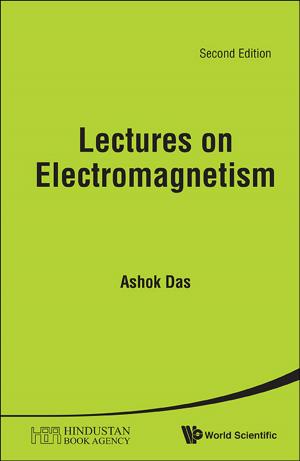How the Universe Works
Introduction to Modern Cosmology
Nonfiction, Science & Nature, Science, Physics, Astrophysics & Space Science, General Physics| Author: | Serge Parnovsky, Aleksei Parnowski | ISBN: | 9789813234963 |
| Publisher: | World Scientific Publishing Company | Publication: | December 26, 2017 |
| Imprint: | WSPC | Language: | English |
| Author: | Serge Parnovsky, Aleksei Parnowski |
| ISBN: | 9789813234963 |
| Publisher: | World Scientific Publishing Company |
| Publication: | December 26, 2017 |
| Imprint: | WSPC |
| Language: | English |
This book is about the history and the current state of the art in the exciting field of cosmology — the science about the Universe as a whole, which is guaranteed to attract the attention of a wide range of readers. It mostly aims to explain the main ideas of modern cosmology: the expanding Universe, its creation in a Big Bang, its evolution, characteristics, and structure, as well as issues — dark matter and dark energy, black holes and other exotic objects etc. It also answers most frequently asked questions about cosmology.
How the Universe Works stands between a popular science book and a textbook, acting as a sort of a bridge across the great chasm separating popular science from true science. It can be also used as an introductory textbook for undergraduate students. It is also suitable for the non-experts in cosmology who wish to have an overview of the current state of the field. It is different from most popular science books because it avoids cutting corners in explanations and contains justification for various assumptions or estimations made in cosmology. It does not hide problems faced by modern cosmology as well as issues the community has no consensus about. It also does not try to pass hypotheses for established theories, which is not uncommon in scholarly articles.
Contents:
- The Laws of the Universe
- The Expanding Universe
- Early Universe
- Dark Matter
- Dark Energy
- Black Holes and Other Exotics
Readership: Students and teachers, also suitable for the general public, together with astronomy enthusiasts.
Key Features:
- The book offers high-quality popular description of cosmology and related subjects, aimed both at general audience and professional scientists from other fields
- The book contains detailed and comprehensive explanations of all main cosmological issues, as well as the latest available data and results with due discussion
- The book contains the derivation of cosmological equations without the use of the complicated mathematical formalism of General Relativity, and thus can be used as a basic textbook
This book is about the history and the current state of the art in the exciting field of cosmology — the science about the Universe as a whole, which is guaranteed to attract the attention of a wide range of readers. It mostly aims to explain the main ideas of modern cosmology: the expanding Universe, its creation in a Big Bang, its evolution, characteristics, and structure, as well as issues — dark matter and dark energy, black holes and other exotic objects etc. It also answers most frequently asked questions about cosmology.
How the Universe Works stands between a popular science book and a textbook, acting as a sort of a bridge across the great chasm separating popular science from true science. It can be also used as an introductory textbook for undergraduate students. It is also suitable for the non-experts in cosmology who wish to have an overview of the current state of the field. It is different from most popular science books because it avoids cutting corners in explanations and contains justification for various assumptions or estimations made in cosmology. It does not hide problems faced by modern cosmology as well as issues the community has no consensus about. It also does not try to pass hypotheses for established theories, which is not uncommon in scholarly articles.
Contents:
- The Laws of the Universe
- The Expanding Universe
- Early Universe
- Dark Matter
- Dark Energy
- Black Holes and Other Exotics
Readership: Students and teachers, also suitable for the general public, together with astronomy enthusiasts.
Key Features:
- The book offers high-quality popular description of cosmology and related subjects, aimed both at general audience and professional scientists from other fields
- The book contains detailed and comprehensive explanations of all main cosmological issues, as well as the latest available data and results with due discussion
- The book contains the derivation of cosmological equations without the use of the complicated mathematical formalism of General Relativity, and thus can be used as a basic textbook















